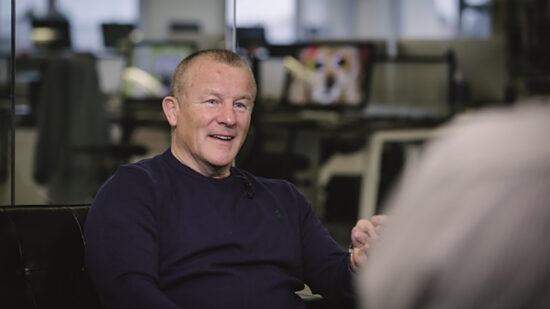Matthew Vaight, manager of the M&G Global Emerging Markets Fund, believes equity investors need to exercise resourcefulness and patience.
“China is a market that grabs investors’ attention. Given the size of its economy and its population that is hardly surprising. However, as equity investors we feel these headlines are more of a sideshow – it’s rare to actually read about the health of the corporate sector or the valuations of the companies on the markets.
“When you look at China from an equity perspective it’s a really interesting market for a number of reasons; the sheer number of companies and the huge range in quality, and valuations, of those companies. It is a true stock pickers market. However, at present it is often a challenging market to find good investment ideas.
“The Chinese economy is widely considered to be divided into two sectors – the ‘old’ economy based primarily on low-cost manufacturing and infrastructure capex and the ‘new’ economy focusing on tertiary industries, consumption and the internet. The old economy can be characterised by suffering from excess capacity, low profitability and debt – financed by the state-owned banking system. The new economy is very innovative and growing rapidly.
“The stock market today is largely divided along these economic lines; companies exposed to the old economy are out of favour and on the face of it look cheaply valued – but perhaps their low valuations are warranted. Companies exposed to the new economy are very much in favour and as a consequence trade on high valuations. This is the challenge value investors face when investing in China – the value companies appear to be potential value traps, the higher quality companies with better prospects trade on valuations that we struggle to justify.
“Given this bifurcation in the market finding investment opportunities is no easy task. We therefore seek companies that are generating decent profits but are being overlooked because of the sectors that they operate in. So, for example, we own a couple of packaging companies and plastic pipe companies – companies that don’t grab investors’ attention from a growth perspective but ultimately are delivering solid profits and trading on single digit P/Es.
“As we celebrate Chinese New Year this week, it is worth to mention that 2017 is the Year of the Rooster, which amongst other things stands for hard work, resourcefulness and patience. We believe these are traits that investors certainly need when approaching a market such as China.”
Moderating investment
Claudia Calich, manager of the M&G Emerging Market Bond Fund can see the soft-landing path continuing, but domestic political risks and external factors are creating near-term uncertainty.
“China will elect new leaders at the end of the year and the market consensus is that the current leadership will not embark on ambitious changes and will seek to maintain the status quo, including in key areas such as state-owned enterprise reform and currency management.
“On the external front, relations with the US will be an important item to monitor. Through the course of this year, we will have a better gauge on how the incoming US administration will approach China in terms of trade, geopolitics, relations with Taiwan and whether the US Treasury will label China as a currency manipulator.
“China’s existing and new leadership will need to navigate through these delicate issues this year and next, in addition to its domestic challenges, including continue engineering a soft landing of the economy, rebalancing the economy from investment-led to consumption-let growth and managing capital flows and the currency.
“On the domestic front, the economy continues on a soft landing path as investment moderates to a more sustainable pace. However, uncertainties on the external front and domestic political risks raise the uncertainty in the near term.”
Private sector credit crisis
Anthony Doyle, investment director in the M&G Fixed Interest team thinks that private sector credit in China is approaching a historic crisis level.
“The chart below shows the level of total credit to the non-financial private sector as a percentage of GDP for some of the world’s largest economies. Chinese and Australian debt ratios are nearing the peak ratio seen in Japan (221%) in the 1990s and Spain (218%) in 2010. Interestingly, China’s household debt-to-GDP ratio, which is incorporated into these numbers, at 42% is much lower than Australia’s at 123%.”
“It is not surprising that credit growth has accelerated post-crisis. The conditions are ripe for credit growth: low yields and ample liquidity being pumped into the global economy by central banks. The problem with heavily indebted economies is that the financial cycle could peak at any time. At some point, borrowers like households and corporations will conclude that their income is not sufficient to service their debt obligations. This will see the non-financial corporate sector enter into a deleveraging cycle: as has happened previously in Japan, Spain, and the U.S.
“Whilst the reflation trade has dominated investment markets in recent months, leading to higher bond yields and equity prices, many have taken their eye off the high and rising debt ratios in some of the world’s largest economies. As we are now nine years into the expansionary phase of the global economic growth cycle, and developed economies are still characterised by rock-bottom central bank rates, one has to wonder whether the next global recession will be much longer than the experience of 2008-09.”








